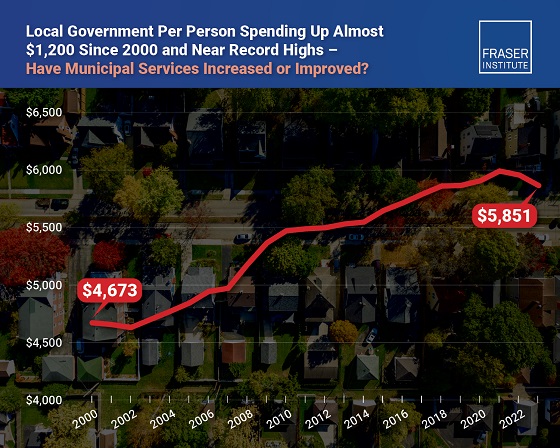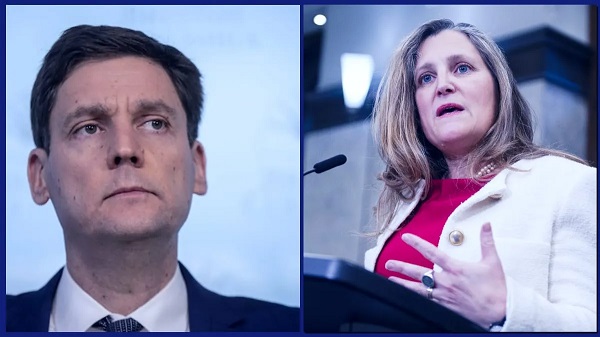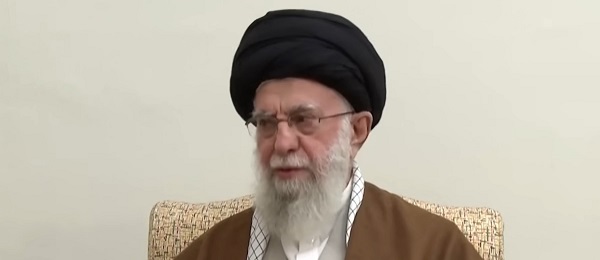Business
America’s Largest And Most Expensive DEI Program Is About To Go Up In Flames
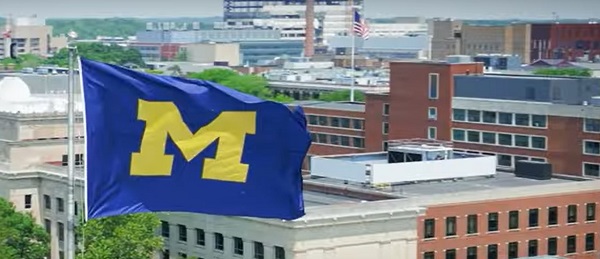
The flag of the University of Michigan
 From the Daily Caller News Foundation
From the Daily Caller News Foundation
By Jaryn Crouson
The University of Michigan’s (UM) multi-million dollar diversity, equity and inclusion (DEI) program may soon be dismantled.
The university’s board of regents has reportedly asked UM president Santa Ono “to defund or restructure” the DEI office amid growing criticism and public pressure, according to emails shared on X. The board is expected to vote on the matter on Dec. 5.
“I write to share information with you about impending threats to the University of Michigan’s DEI programming and core values of diversity, equity, and inclusion,” Rebekah Modrak, faculty senate chair, wrote in an email to faculty senate members. “It has been confirmed by multiple sources that the Regents met earlier this month in a private meeting with a small subgroup of central leadership members, and among the topics discussed was the future of DEI at UM, including the possibility of defunding DEI in the next fiscal year.”
Calls for the university’s DEI program to come to a close surfaced after The New York Times exposed its failures and the vast amount of money being thrown at it.
“In recent years, as D.E.I. programs came under withering attack, Michigan has only doubled down on D.E.I., holding itself out as a model for other schools,” the NYT wrote in an October article. “By one estimate, the university has built the largest D.E.I. bureaucracy of any big public university. But an examination by The Times found that Michigan’s expansive — and expensive — D.E.I. program has struggled to achieve its central goals even as it set off a cascade of unintended consequences.”
Despite UM investing $250 million into DEI since 2016, students and faculty have reported a deteriorating campus climate since the program began and are less likely to interact with people of a different race, religion or political ideology, though these are “the exact kind of engagement[s] D.E.I. programs, in theory, are meant to foster,” the article stated. Attempts to create a more diverse campus also fell flat, with black enrollment at the university remaining a steady 5%.
The program also created a “culture of grievance,” with the office’s conception coinciding with an “explosion” of complaints on campus involving race, gender and religion, the NYT reported. Meanwhile, nearly 250 university employees were engaged in some form of DEI efforts on campus.
Modrak in her email referenced the article, calling it a “tendentious attack” that was “not well researched,” and claiming that the author “cherry-picked” examples of UM’s failures.
DEI staff cost the university approximately $30.68 million annually, with the average salary reaching $96,400, according to Mark Perry, an American Enterprise Institute scholar. Several DEI employees are paid more than $200,000 a year, while the department’s head makes upwards of $400,000.
“I think that across the ideological spectrum both regular citizens and policymakers have really shifted on issues of identity politics,” John Sailer, senior fellow and director of higher education policy at the Manhattan Institute, told the Daily Caller News Foundation. “I think a lot of people who would have at some point, probably just as a matter of knee-jerk reaction, supported diversity initiatives, have started to really reconsider what these initiatives are actually doing, and reconsider whether everything that falls under the name of DEI is actually something that they support. And so there was already the slow burn.”
The major catalyst of this change, Sailer explained, was the series of fiery protests that ravaged college campuses across the country after Hamas’ deadly Oct. 7, 2023 attack on Israel, which were “absolutely a big part of the story.”
“A lot of people were already skeptical of DEI,” Sailer said. “A lot of people were already of the opinion that these policies, even though they purport to be about diversity, in practice really have been about a particular ideological vision for higher ed. Then on October 7, I think a whole different part of the American electorate and a whole different constituency, many more people from the professional world looked at universities and thought, What on earth is going on? What is the problem here?”
The University of Michigan, like many other schools, was overwhelmed by violent protests that resulted in several arrests and criminal charges being filed against 11 students and alumni.
“It became clear that a part of the problem was we have these massive bureaucracies that should ostensibly promote treating people well,” Sailer continued. “And it was in fact a lot of people most involved with the DEI complex who were supporting these kind of radically anti-Israel, radically anti-West, at times, rudely antisemitic demonstrations.”
The reelection of former president Donald Trump on Nov. 5 likely played no small role in this shift either.
“I think now every elected official is aware that there’s something of a popular mandate to reform higher education, and that mandate existed before Trump was elected in 2024, but there’s also a kind of popular rebuke of the progressive identity politics,” Sailer said. “I have to think that the conversation that the University of Michigan’s regents are having about DEI would be different if there had not been this nationwide rebuke of identity politics that the election of Trump seems to represent.”
Trump has promised many reforms to the education sector, including abolishing the Department of Education entirely. The president-elect has also vowed to bring peace to Israel and Gaza and said that such efforts would help curb the rise in antisemitism in the U.S.
While several other schools have begun to dismantle DEI offices across the country, some in response to state laws barring the departments and policies, the case at the University of Michigan is unique. Most efforts thus far have been led by Republican lawmakers, such as in Texas and Florida, but in the blue state of Michigan, the university’s highest governing body is comprised almost entirely of Democrats.
“The fact that University of Michigan is an institution controlled by elected Democrats, the fact that its Board of Regents would consider doing something like this, I think it signals a broader shift,” Sailer said. “It’s a huge deal for the University of Michigan to even have this kind of reform on the table. It’s a huge deal because the University of Michigan is the exemplar when it comes to DEI. If the University of Michigan makes this decision, that marks a big shift.”
This move by the university could signal others to follow suit.
“It could be just a massive step towards broader higher education reform,” Sailer told the DCNF.
UM and the Board of Regents did not immediately respond to the DCNF’s request for comment.
Alberta
Pierre Poilievre – Per Capita, Hardisty, Alberta Is the Most Important Little Town In Canada

From Pierre Poilievre
Business
Why it’s time to repeal the oil tanker ban on B.C.’s north coast

The Port of Prince Rupert on the north coast of British Columbia. Photo courtesy Prince Rupert Port Authority
From the Canadian Energy Centre
By Will Gibson
Moratorium does little to improve marine safety while sending the wrong message to energy investors
In 2019, Martha Hall Findlay, then-CEO of the Canada West Foundation, penned a strongly worded op-ed in the Globe and Mail calling the federal ban of oil tankers on B.C.’s northern coast “un-Canadian.”
Six years later, her opinion hasn’t changed.
“It was bad legislation and the government should get rid of it,” said Hall Findlay, now director of the University of Calgary’s School of Public Policy.
The moratorium, known as Bill C-48, banned vessels carrying more than 12,500 tonnes of oil from accessing northern B.C. ports.
Targeting products from one sector in one area does little to achieve the goal of overall improved marine transport safety, she said.
“There are risks associated with any kind of transportation with any goods, and not all of them are with oil tankers. All that singling out one part of one coast did was prevent more oil and gas from being produced that could be shipped off that coast,” she said.
Hall Findlay is a former Liberal MP who served as Suncor Energy’s chief sustainability officer before taking on her role at the University of Calgary.
She sees an opportunity to remove the tanker moratorium in light of changing attitudes about resource development across Canada and a new federal government that has publicly committed to delivering nation-building energy projects.
“There’s a greater recognition in large portions of the public across the country, not just Alberta and Saskatchewan, that Canada is too dependent on the United States as the only customer for our energy products,” she said.
“There are better alternatives to C-48, such as setting aside what are called Particularly Sensitive Sea Areas, which have been established in areas such as the Great Barrier Reef and the Galapagos Islands.”
The Business Council of British Columbia, which represents more than 200 companies, post-secondary institutions and industry associations, echoes Hall Findlay’s call for the tanker ban to be repealed.
“Comparable shipments face no such restrictions on the East Coast,” said Denise Mullen, the council’s director of environment, sustainability and Indigenous relations.
“This unfair treatment reinforces Canada’s over-reliance on the U.S. market, where Canadian oil is sold at a discount, by restricting access to Asia-Pacific markets.
“This results in billions in lost government revenues and reduced private investment at a time when our economy can least afford it.”
The ban on tanker traffic specifically in northern B.C. doesn’t make sense given Canada already has strong marine safety regulations in place, Mullen said.
Notably, completion of the Trans Mountain Pipeline expansion in 2024 also doubled marine spill response capacity on Canada’s West Coast. A $170 million investment added new equipment, personnel and response bases in the Salish Sea.
“The [C-48] moratorium adds little real protection while sending a damaging message to global investors,” she said.
“This undermines the confidence needed for long-term investment in critical trade-enabling infrastructure.”
Indigenous Resource Network executive director John Desjarlais senses there’s an openness to revisiting the issue for Indigenous communities.
“Sentiment has changed and evolved in the past six years,” he said.
“There are still concerns and trust that needs to be built. But there’s also a recognition that in addition to environmental impacts, [there are] consequences of not doing it in terms of an economic impact as well as the cascading socio-economic impacts.”
The ban effectively killed the proposed $16-billion Eagle Spirit project, an Indigenous-led pipeline that would have shipped oil from northern Alberta to a tidewater export terminal at Prince Rupert, B.C.
“When you have Indigenous participants who want to advance these projects, the moratorium needs to be revisited,” Desjarlais said.
He notes that in the six years since the tanker ban went into effect, there are growing partnerships between B.C. First Nations and the energy industry, including the Haisla Nation’s Cedar LNG project and the Nisga’a Nation’s Ksi Lisims LNG project.
This has deepened the trust that projects can mitigate risks while providing economic reconciliation and benefits to communities, Dejarlais said.
“Industry has come leaps and bounds in terms of working with First Nations,” he said.
“They are treating the rights of the communities they work with appropriately in terms of project risk and returns.”
Hall Findlay is cautiously optimistic that the tanker ban will be replaced by more appropriate legislation.
“I’m hoping that we see the revival of a federal government that brings pragmatism to governing the country,” she said.
“Repealing C-48 would be a sign of that happening.”
-

 Crime2 days ago
Crime2 days agoNational Health Care Fraud Takedown Results in 324 Defendants Charged in Connection with Over $14.6 Billion in Alleged Fraud
-

 Health2 days ago
Health2 days agoRFK Jr. Unloads Disturbing Vaccine Secrets on Tucker—And Surprises Everyone on Trump
-
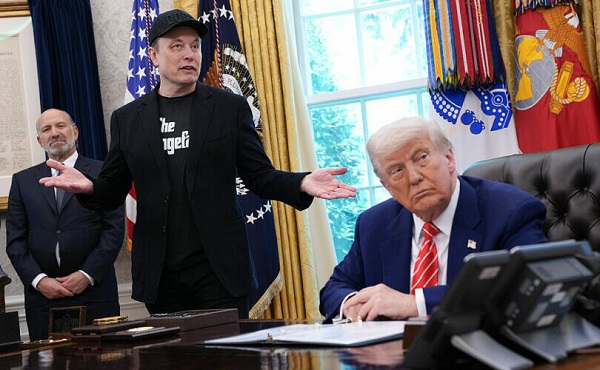
 Business1 day ago
Business1 day agoElon Musk slams Trump’s ‘Big Beautiful Bill,’ calls for new political party
-

 Business13 hours ago
Business13 hours agoLatest shakedown attempt by Canada Post underscores need for privatization
-

 Business13 hours ago
Business13 hours agoWhy it’s time to repeal the oil tanker ban on B.C.’s north coast
-
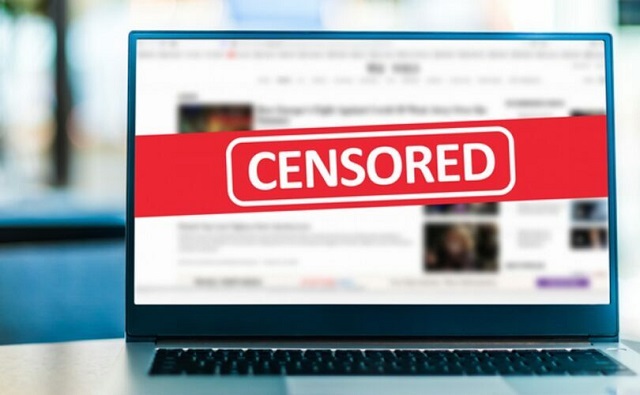
 Censorship Industrial Complex1 day ago
Censorship Industrial Complex1 day agoGlobal media alliance colluded with foreign nations to crush free speech in America: House report
-

 International20 hours ago
International20 hours agoCBS settles with Trump over doctored 60 Minutes Harris interview
-

 Energy13 hours ago
Energy13 hours agoIf Canada Wants to be the World’s Energy Partner, We Need to Act Like It


